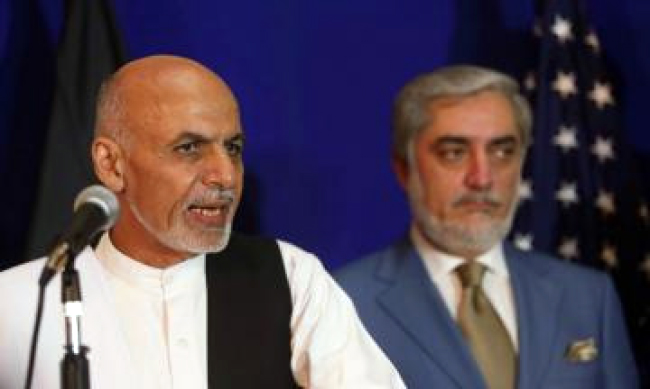After the collapse of the Taliban regime in 2001, there are still signs of simmering inter-ethnic tensions boiling in Afghanistan that threaten the very fabric of the current establishment. The Taliban conflict may be the most daunting challenge in the way of the state-building process in Afghanistan, but the fact remains that there many other challenges to the process which may be dormant but are potentially destabilizing in the long run. The developments of the recent counter demonstrations in the northern Mazar-e-Sharif city indicated the fragileness of the political environment and the potential threat it poses to the sustainability of the state-building process. The incidents showed how the long-existing inter-ethnic tensions could spark rivalries and violence among political players.
Recently the outgoing chairman of the UN mission in Afghanistan and UN Secretary-General’s Special Representative for the country Nicholas Haysom mentioned fragile political environment as a key challenge ahead of Afghanistan in 2016, insisting that failure to tackle the challenges including lack of political cohesion would be catastrophic for Afghanistan. The remarks by the UN official proved to be the right warning at a right time. With the recent developments in the north, it is time for the Afghan political community to start worrying about the situation and how the divisive political environment could be managed so that further unfavorable events in the future could be prevented.
One of the key objectives of the international coalition’s involvement was to help Afghans in the post-Taliban state-building processes. Key law enforcement, executive and lawmaking institutions were established and developed. However, too much focus has been put on the establishment of different entities. The trends of political development and institutionalizing democracy have had many shortcomings over past fifteen years. Former president Hamid Karzai’s approach in retaining the grasp of power was to use a policy of patronage aimed at building a network of allies in the political community and across the country. This approach failed him to promote democracy and meritocracy in the administration rather left him reliant on support of the former jihadi and ethnic leaders.
The 2014 presidential elections was a major blow to the legitimacy and credibility of the government, the sustainability of the state-building process and the stability of the political environment in the country. The elections left the Afghan political community deeply polarized while on the other hand potentially harmed the legitimacy and credibility of the political processes and of the state itself. Afghanistan will not be able to afford the harms the 2014 presidential elections did to the country’s political development. The recent tensions between the two key stakeholders of the national unity government are indicative of how the presidential elections have poisoned the political environment in Afghanistan.
The Afghan government has missed great chances in the past to start leading the nation into the right direction on state-building and development of democracy in the country. However now, the government still does have the main responsibility to seek long-term solutions to enhance authority and legitimacy of the state and establish mechanisms in which all political actors can play democratically and peacefully. The Afghan government and the international community supporting Afghanistan should start initiatives aimed at strengthening authority of the central government and, in the meantime, promoting national consensus to back the trend of political development in the country.
There are with no doubt. many factors that led to the recent tensions in the north and many political actors, could be involved in deterioration of situation in Mazar-e Sharif. The immediate causes of the tensions are only on the surface. The government is also to blame for creating an environment of rivalry between politicians and, in the meantime, government officials in the national unity government through marginalizing them from the decision-making processes and pushing them to resort to their local power bases. All the political figures need to exercise restraints and allow the government, the law enforcement agencies and the political mediators to come between and end the crisis.
The government should act from a position of strength while keeping a stance of neutrality over the issues. The national unity government needs to realize that development of political and inter-ethnic tensions will add up to its failures in promoting political cohesion and national harmony in the country. The government must take long-term approach aimed at eliminating the factors of development of such inter-ethnic tensions centered on strongmen and politicians affiliated to one of the ethnic groups. The government should eliminate the factors of such provocations by bringing changes in the local administrations. It needs to seek an approach that brings stability and central government monopoly over local administrations while ensuring sufficient participation of all ethnic groups in national governance and politics. For this, it is crucial to seek broad political consensus. That consensus can be attained by ensuring sufficient participation of all ethnic groups in the national politics and governance. The Afghan government needs to realize the urgency of need to start depolarization of the country’s politics and removing attractiveness of the local power hubs to jihadi and ethnic figures.
Home » Opinion » The Fragile Political Environment
The Fragile Political Environment
| Abdul Ahad Bahrami

